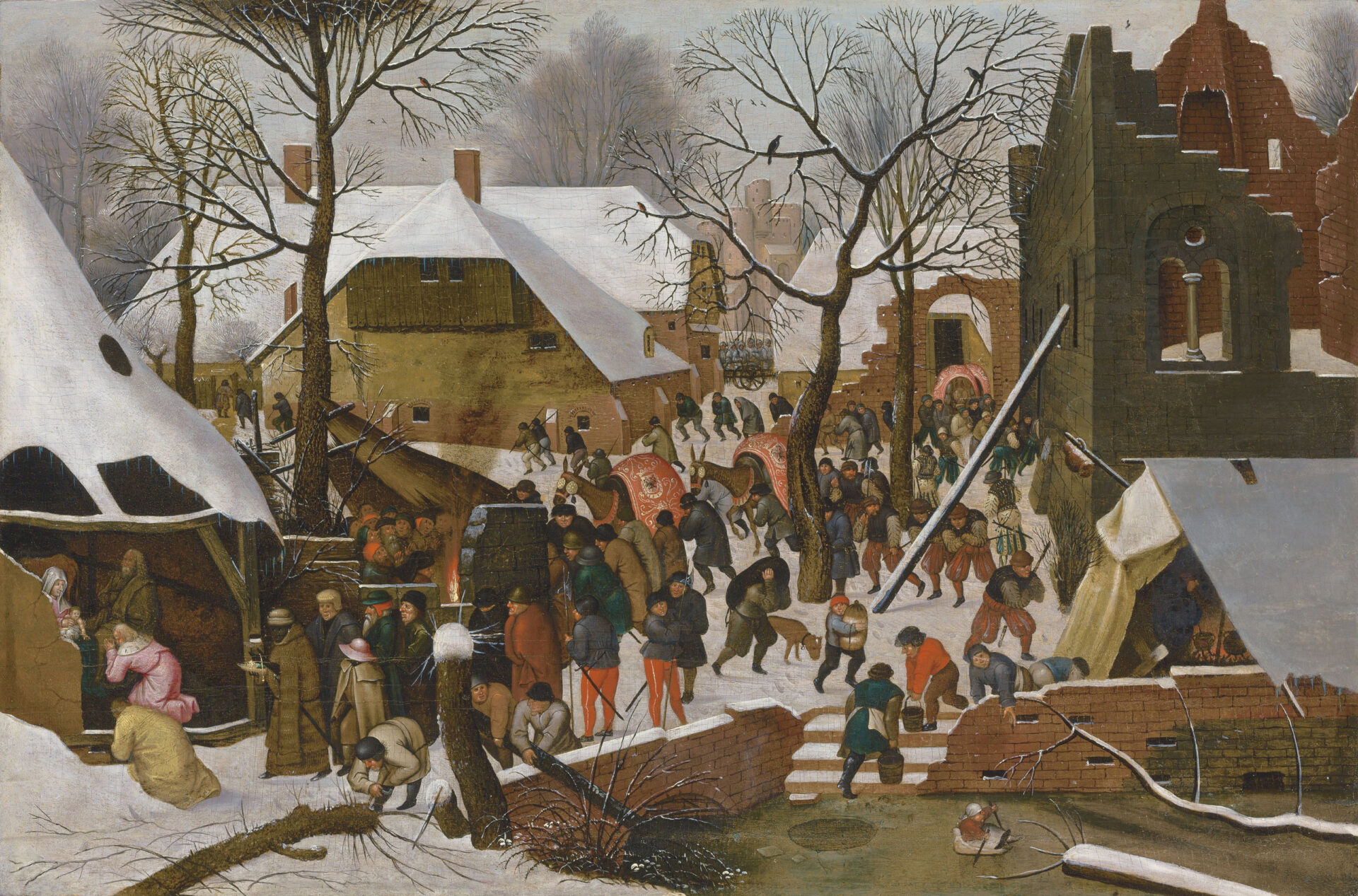In northern Europe the masters of the fifteenth century were influenced by their Gothic traditions as well as by Titian and other Italians. The ranking northern painters included two Germans, Albrecht Durer (1471-1528) and Hans Holbein (c. 1496-1543), and two from the Low Countries, Hieronymus Bosch (c. 1450-1516) and Pieter Brueghel (c. 1525-1569).
DUrer received commissions from the emperor Maximilian and Brueghel from wealthy businessmen of Antwerp and Brussels. Holbein executed portraits of Henry VIII and his courtiers as well as a likeness of Erasmus that catches the humanist’s wit and intelligence.
Diirer created what has been termed the first great Protestant art, in which he simplified traditional Christian themes by pruning them of what Lutherans regarded as Catholic trimmings. But this was only one facet of Diirer’s many-sided talent; his fascination with nature led him to include wild creatures in many pictures; his realistic and compassionate portrait of his aged mother might almost have been taken from Leonardo’s notebooks; and his improvements in the techniques of woodcuts and engravings enabled him to mass-produce his own drawings as illustrations for printed books.
Northern art was fascinated with the monstrous and supernatural. Darer depicted this Gothic strain in a series of woodcuts of the Four Horsemen and other grim figures of the Apocalypse. Bosch made his paintings graphic sermons filled with nightmarish apparitions illustrating the omnipresence of sin and evil and foreshadowing the techniques and effects of the surrealists of the twentieth century. Brueghel’s works contained coats-of-arms that fight, shellfish that fly, and monstrous hybrids that have insect wings, artichoke bodies, and flower heads.
Other paintings of Brueghel’s were realistic and sensitive comments on human misery in a time long before social services, such as The Blind Leading the Blind. Brueghel also favored two types of painting otherwise neglected in the period. One was the landscape; his series illustrating farming activities through the year was in the tradition of late medieval books of hours, but with new attention to the changing light and atmosphere of the seasons. The other was the densely populated scene of everyday life and popular culture—children’s games and peasant weddings, dances and festivals.

